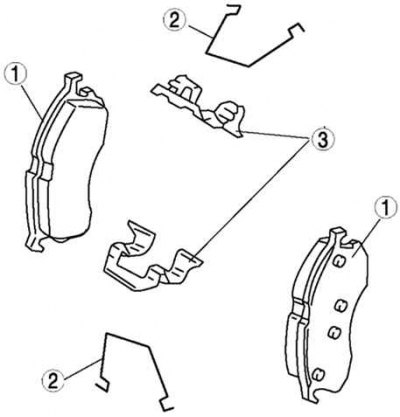
Pic. 6.38. Front brake pads: 1 - brake pads; 2 - coupling springs; 3 - clamping plates
Visual check of pad thickness
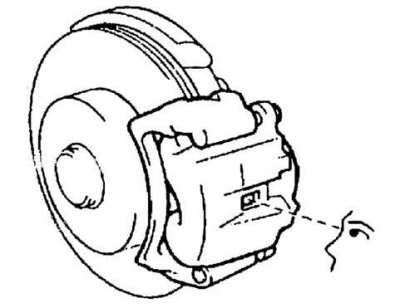
Pic. 6.39. Visual inspection of brake pad thickness
Check pad thickness. To do this, raise the car, remove the wheel and look through the inspection hole in the cylinder body (pic. 6.39).
- Minimum thickness of brake pads: 1 mm.
- Limit wear: 2.0 mm.
Removing the brake pads
Attention! When replacing brake pads, always change the inner and outer gaskets and gasket covers as a set.
Drain the brake fluid.
Remove the front wheel and temporarily secure the rim with two nuts.
Turn away a bolt and disconnect an arm of a brake hose.
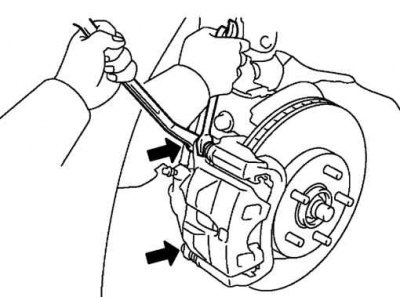
Pic. 6.40. Loosening the caliper bolts
While holding the guide pins, unscrew the caliper mounting bolts (pic. 6.40).
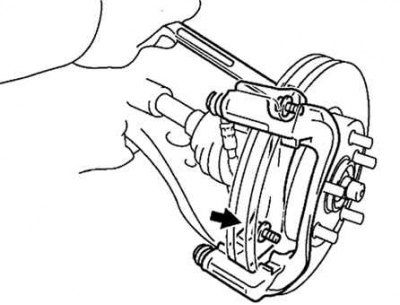
Pic. 6.41. Removing the caliper body
Loosen the caliper housing mounting bolts and remove the caliper (pic. 6.41).
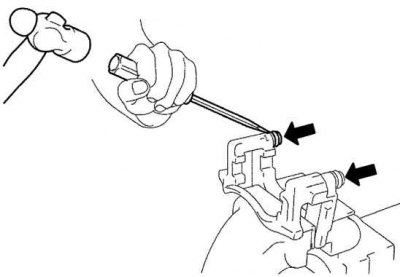
Pic. 6.42. Removing the guide pin boots
While holding the caliper in a soft-jawed vise, use a screwdriver and hammer to remove the guide pin boots (pic. 6.42).
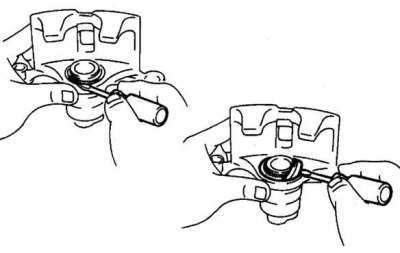
Pic. 6.43. Removing the brake cylinder boot
Using a screwdriver, remove the brake cylinder boot spring ring and boot (pic. 6.43).
Place a rag between piston and cylinder.
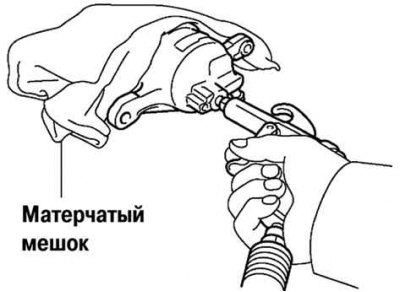
Pic. 6.44. Removing the piston from the cylinder
Using compressed air, remove the piston from the cylinder (pic. 6.44).
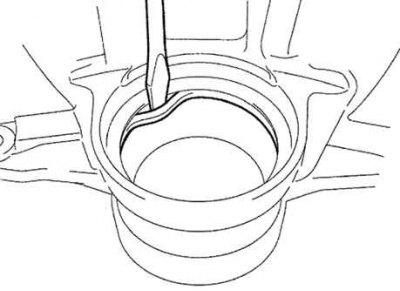
Pic. 6.45. Removing the gland
Using a screwdriver, remove the seal (pic. 6.45).
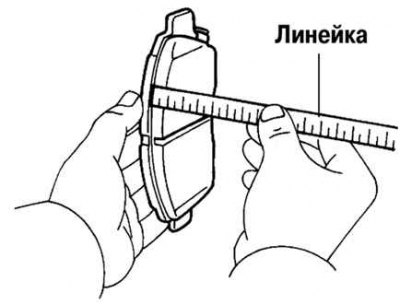
Pic. 6.46. Measuring the thickness of brake pads
Measure the thickness of the brake pads with a ruler (pic. 6.46).
- Standard thickness: 12 mm.
- Minimum thickness: 1.0 mm.
If the minimum pad thickness is not as specified, replace the pads.
Push the piston completely into the cylinder using the tool.
Install the brake disc pad.
